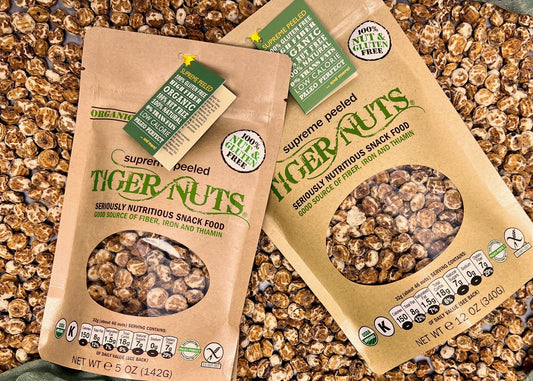News
Winter Wellness for Snowbirds: Embracing Fitnes...
For the adventurous souls known as "Snowbirds," who migrate to warmer climates in search of respite from harsh winter weather, staying active and maintaining a healthy lifestyle is a...
Winter Wellness for Snowbirds: Embracing Fitnes...
For the adventurous souls known as "Snowbirds," who migrate to warmer climates in search of respite from harsh winter weather, staying active and maintaining a healthy lifestyle is a...
Tiger Nuts: Nature's Nutritional Powerhouses fo...
Are you searching for seriously healthy foods to enhance your well-being and satisfy your foodie cravings? Look no further than Tiger Nuts! These marvelous tubers, also known as chufa nuts...
Tiger Nuts: Nature's Nutritional Powerhouses fo...
Are you searching for seriously healthy foods to enhance your well-being and satisfy your foodie cravings? Look no further than Tiger Nuts! These marvelous tubers, also known as chufa nuts...

Tiger Nuts: Warning: Side effects may include i...
Are you on the hunt for a gluten and nut-free, organic superfood that's high in fiber and nutrition, low in fats, non-allergenic, and perfectly fits your AIP or Paleo lifestyle?...
Tiger Nuts: Warning: Side effects may include i...
Are you on the hunt for a gluten and nut-free, organic superfood that's high in fiber and nutrition, low in fats, non-allergenic, and perfectly fits your AIP or Paleo lifestyle?...
The Top 10 Benefits of Exercise for Boomers
As the boomer generation gracefully ages, staying active and maintaining good health become essential aspects of their well-being. Regular exercise has proven to be a powerful tool in enhancing overall...
The Top 10 Benefits of Exercise for Boomers
As the boomer generation gracefully ages, staying active and maintaining good health become essential aspects of their well-being. Regular exercise has proven to be a powerful tool in enhancing overall...
The Top 10 AIP and Paleo Diet Tips
Know What You're Getting Into: Before diving into the AIP or Paleo diet, take some time to learn the ropes. Get familiar with what you can eat and what to...
The Top 10 AIP and Paleo Diet Tips
Know What You're Getting Into: Before diving into the AIP or Paleo diet, take some time to learn the ropes. Get familiar with what you can eat and what to...
Where to find gluten-free and nut-free recipes
We spent some time checking out the best websites to find the Top 10 online places to find gluten-free and nut-free recipes and we believe that these are they: Minimalist Baker:...
Where to find gluten-free and nut-free recipes
We spent some time checking out the best websites to find the Top 10 online places to find gluten-free and nut-free recipes and we believe that these are they: Minimalist Baker:...
